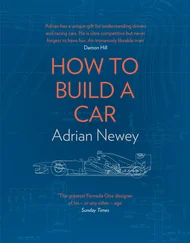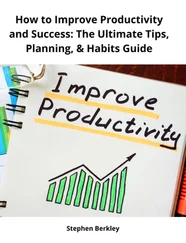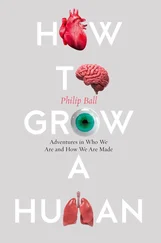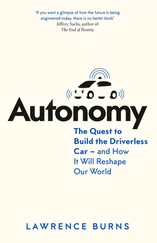Eyal, Nir - Hooked - How to Build Habit-Forming Products
Здесь есть возможность читать онлайн «Eyal, Nir - Hooked - How to Build Habit-Forming Products» весь текст электронной книги совершенно бесплатно (целиком полную версию без сокращений). В некоторых случаях можно слушать аудио, скачать через торрент в формате fb2 и присутствует краткое содержание. Год выпуска: 2014, Издательство: Nir Eyal, Жанр: Старинная литература, на английском языке. Описание произведения, (предисловие) а так же отзывы посетителей доступны на портале библиотеки ЛибКат.
- Название:Hooked: How to Build Habit-Forming Products
- Автор:
- Издательство:Nir Eyal
- Жанр:
- Год:2014
- ISBN:нет данных
- Рейтинг книги:5 / 5. Голосов: 1
-
Избранное:Добавить в избранное
- Отзывы:
-
Ваша оценка:
- 100
- 1
- 2
- 3
- 4
- 5
Hooked: How to Build Habit-Forming Products: краткое содержание, описание и аннотация
Предлагаем к чтению аннотацию, описание, краткое содержание или предисловие (зависит от того, что написал сам автор книги «Hooked: How to Build Habit-Forming Products»). Если вы не нашли необходимую информацию о книге — напишите в комментариях, мы постараемся отыскать её.
Hooked: How to Build Habit-Forming Products — читать онлайн бесплатно полную книгу (весь текст) целиком
Ниже представлен текст книги, разбитый по страницам. Система сохранения места последней прочитанной страницы, позволяет с удобством читать онлайн бесплатно книгу «Hooked: How to Build Habit-Forming Products», без необходимости каждый раз заново искать на чём Вы остановились. Поставьте закладку, и сможете в любой момент перейти на страницу, на которой закончили чтение.
Интервал:
Закладка:
To uncover where interfaces are changing, Paul Buchheit, Partner at Y-Combinator, encourages entrepreneurs to “live in the future.” [cxxxix]A profusion of interface changes are just a few years away. Wearable technologies like Google Glass, the Oculus Rift virtual reality goggles, and the Pebble watch promise to change how users interact with the real and digital worlds. By looking forward to anticipate where interfaces will change, the enterprising designer can uncover new ways to form user habits.
***
Remember and Share
- The Hook Model helps the product designer generate an initial prototype for a habit-forming technology. It also helps uncover potential weaknesses in an existing product’s habit-forming potential.
- Once a product is built, Habit Testing helps uncover product devotees, discover which product elements are habit forming (if any), and why those aspects of your product change user behavior. Habit Testing includes three steps: identify, codify, and modify.
- First, dig into the data to identify how people are behaving and using the product.
- Next, codify these findings in search of habitual users. To generate new hypotheses, study the actions and paths taken by devoted users.
- Lastly, modify the product to influence more users to follow the same path as your habitual users, and then evaluate results and continue to modify as needed.
- Keen observation of one's own behavior can lead to new insights and habit-forming product opportunities.
- Identifying areas where a new technology makes cycling through the Hook Model faster, more frequent or more rewarding provides fertile ground for developing new habit-forming products.
- Nascent behaviors — new behaviors that few people see or do, and yet ultimately fulfill a mass-market need — can inform future breakthrough habit-forming opportunities.
- New interfaces lead to transformative behavior change and business opportunities.
***
Do This Now
Refer to the answers you came up with in the “Do This Now” section in chapter five to complete the following exercises:
- Perform Habit Testing, as described in this chapter, to identify the steps users take toward long-term engagement.
- Be aware of your behaviors and emotions for the next week as you use everyday products. Ask yourself:
- What triggered me to use these products? Was I prompted externally or through internal means?
- Am I using these products as intended?
- How might these products improve their on-boarding funnels, re-engage users through additional external triggers, or encourage users to invest in their services?
- Speak with three people outside your social circle to discover which apps occupy the first screen on their mobile devices. Ask them to use these apps as they normally would and see if you uncover any unnecessary or nascent behaviors.
- Brainstorm five new interfaces that could introduce opportunities or threats to your business.
APPENDIX
NOW WHAT?
Thank you for investing in this book. Now that you have read it, let me hear from you!
Please take a moment to review the book on Amazon (http://www.amazon.com/dp/B00HJ4A43S) and Goodreads (http://goo.gl/UBHeLY).
Also, be sure to visit my blog (NirAndFar.com) to learn more about habit-forming products and receive my latest essays.
Finally, please send questions, comments, edits, or feedback to: nir@nirandfar.com.
ABOUT THE AUTHORS
Nir Eyalwrites, consults, and teaches about the intersection of psychology, technology, and business. He is an advisor to several Bay Area startups, venture capital firms, and incubators. Since 2003, Nir has founded two technology companies. His most recent startup received venture funding from Kleiner Perkins Caufield & Byers. Nir has lectured at the Stanford Graduate School of Business and the Hasso Plattner Institute of Design at Stanford. His writing appears in The Atlantic , Harvard Business Review , Forbes , Psychology Today, TechCrunch, and his blog, NirAndFar.com. Nir attended the Stanford Graduate School of Business and Emory University.
Ryan Hooveris a writer and observer of product trends, growth, and behavior design with essays featured in Forbes , Fast Company , The Next Web, and PandoDaily. Ryan was the Director of Product at PlayHaven, a business engine for mobile game developers. He is the co-creator of Product Hunt, a daily leaderboard for new products, and is an Instructor at Tradecraft, a 12-week program training startup talent.
ACKNOWLEDGEMENTS
If I am ever asked, “What was the most surprising thing you learned while writing this book?,” I won’t respond with any of the research studies or company examples you’ve read. Although the topic has captivated me for over two and a half years, there can only be one answer to this question: I never knew how generous people could be.
I owe a particular debt of gratitude to the following people. This book truly would not have been possible without them.
Michelle Ahronovitz, Stephen Anderson, Dan Ariely, Jess Bachman, Gil Ben-Artzy, Laura Bergheim, Michal Bortnik, Vlada Bortnik, Jonathan Bolden, Ramsay Brown, Tim Chang, James Cham, Andrew Chen, Sangeet Paul Choudary, Steve Corcoran, Alex Cowan, John Dailey, Tanna Drapkin, Karen Dulski, Scott Dunlap, Eric Eldon, Josh Elman, Jasmine Eyal, Monique Eyal, Ofir Eyal, Omer Eyal, Ronit Eyal, Victor Eyal, Andrew Feiler, Christy Fletcher, BJ Fogg, Janice Fraser, Jason Fraser, Shuly Galili, Ben Gardner, Kelly Greenwood, Bobby Greunwald, Jonathan Guerrera, Austin Gunter, Steph Habif, Leslie Harlson, Stephen Houghton, Jason Hreha, Gabriela Hromis, Peter Jackson, Noah Kagan, Dave Kashen, Amy Jo Kim, John Kim, Michael Kim, David King, Thomas Kjemperud, Tristan Kromer, Rok Krulec, Michal Levin, Jonathan Libov, Chuck Longanecker and the team at Digital Telepathy, Jennifer Lu, Wayne Lue, Jules Maltz, Zack Marom, Dave McClure, Kelly McGonigal, Sarah Melnyk, Oreon Mounter and the team at MomentCo.com, Matt Mullenweg, Yash Nelapati, David Ngo, Thomas O’Duffy, Max Ogles, Amy O’Leary, Line Oma, Alex Osterwalder, Trevor Owens, Brett Redinger, Sharbani Roy, Gretchen Rubin, Lisa Rutherford, Kate Rutter, Paul Sas, Todd Sattersten, Travis Sentell, Bhavin Shah, Hiten Shah, Jason Shen, Baba Shiv, Paul Singh, Katja Spreckelmeyer, Jon Stone, Nisha Sudarsanam, Lydia Sugarman, Tim Sullivan, Tracey Sullivan, Guy Vincent, Jeff Waldstreicher, Charles Wang, AnneMarie Ward, Stephen Wendell, Mark Williamson, David Wolfe, Colin Zhu, Gabe Zichermann
There are two more people who deserve extra recognition: First, Ryan Hoover, the Contributing Author, was instrumental in helping me turn a jumble of blog posts and writing scraps into a cohesive book. His dedication to this project, writing talent, and dogged persistence made the idea of this book a reality. I am sure the world will be hearing much more from Ryan in the years to come and I feel fortunate to have worked with him early in his career.
Next, this book is dedicated to my wife Julie Li-Eyal. Julie assisted with everything, from practical tasks (such as designing the book cover and presentation slides) to serving as a sounding board during the ups and downs of the writing process. However, of all her contributions, the greatest is her unwavering support. Her endless affection leaves me forever in her debt and always wondering how I got so lucky.
CONTRIBUTORS
Thank you to the loyal blog subscribers who provided insightful feedback, careful edits, moral support, and gentle prodding.
The people listed on the following pages donated their time and insights to improving this book. I am in awe of their willingness to contribute to making this book what it is.
Читать дальшеИнтервал:
Закладка:
Похожие книги на «Hooked: How to Build Habit-Forming Products»
Представляем Вашему вниманию похожие книги на «Hooked: How to Build Habit-Forming Products» списком для выбора. Мы отобрали схожую по названию и смыслу литературу в надежде предоставить читателям больше вариантов отыскать новые, интересные, ещё непрочитанные произведения.
Обсуждение, отзывы о книге «Hooked: How to Build Habit-Forming Products» и просто собственные мнения читателей. Оставьте ваши комментарии, напишите, что Вы думаете о произведении, его смысле или главных героях. Укажите что конкретно понравилось, а что нет, и почему Вы так считаете.












